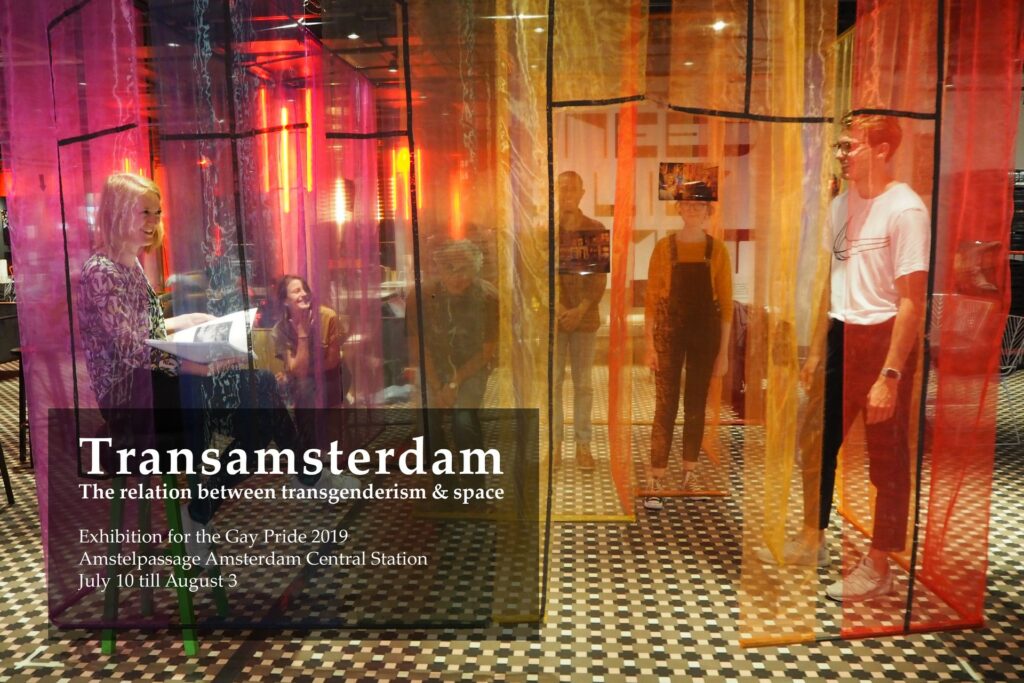The installation “TransAmsterdam: Exploring the space of the other” was on display in the Amstelpassage between July 10 and August 3, 2019, as part of the Gay Pride Amsterdam
Just like people inside a space are the ones that define the uncanny properties of that particular space, culture and society have defined the stereotypes of what the genders should be, the problem with this preconception is that men and women are seen as complete opposites. The man must take care of the women because the first is strong and the second is weak, the woman has to take care of the family because she is sensitive, unlike the man, who shouldn’t show any emotions. This perhaps is what makes the concept of transgenderism uncanny. For they are simply humans transgressing from one to the other sex, making them almost completely the opposite sex, however, the blurred line is still visible, a reminder of the person’s born sex still lingers making transgenderism a concept that is experienced as uncanny. The uncanny however is present at some degree in everything that we do. Genders should be seen as a wide spectrum, just as Boullé’s temple of death is a building in which both light and darkness are present at all times, all men have, at some degree, feminine characteristics and vice-versa, this is the basis for a more accurate description of human nature. If we accept that duality, contradictions, and irony are part of our human nature, then transgenderism wouldn’t be a different gender, instead, it would be accepted as a point inside the masculine-feminine spectrum. Just like Boulleé architecture evolved when he realized that the pairing of transparency and obscurity is essential for space o operate properly, we should evolve in accepting that we are all, at some degree in between light and darkness, we are all shadows of what culture defines as men and women.





